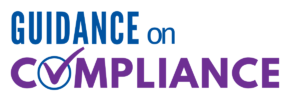In clinical settings, proper documentation of prescription drug management is essential for ensuring patient safety, compliance with regulatory standards, and accurate billing. Additionally, understanding the differences between prescription and over-the-counter (OTC) medications is crucial for effective medication management. Here we outline the documentation requirements for prescription drug management and highlight the key differences between prescription and OTC medications.
Documentation Requirements for Prescription Drug Management
According to the AMA, appropriate documentation of prescription drug management involves more than simply listing the current medications. Physicians must demonstrate that they have evaluated the medications as part of the service provided. Key documentation requirements include:
- Direct Connection: Establish a direct connection between the prescribed medication and the work performed during the visit. For example, document statements like “stable hypertension, continue valsartan 10 milligrams, will refill for 4 months until the next follow-up visit.”
- Evaluation of Medications: Document evidence that the physician has evaluated the medications, including any changes made, reasons for the changes, and the expected outcomes.
- Risk Assessment: Include a risk assessment related to prescription drug management, such as potential side effects, interactions with other medications, and the patient’s overall health condition.
- Patient Education: Document any patient education provided regarding the prescribed medications, including instructions on how to take the medication, potential side effects, and the importance of adherence to the prescribed regimen.
Differences Between Prescription and Over-the-Counter Medications Relating to Medical Decision-Making
- A prescription drug that the practitioner is evaluating the appropriateness of using for the patient, and/or continuing to prescribe for the patient.
- Documentation of the prescription drug(s) that are being considered and the reason why they are being considered.
- Documentation of a decision to initiate a new prescription drug(s).
- Documentation of a practitioner’s decision to discontinue a prescription drug or to adjust the current dosage relative to changes in a patient’s condition.
- The patient’s condition, possible adverse effects, potential benefits, etc. of the patient using this prescription drug.
- CMS says “An order for an over-the-counter (OTC) drug does not count as prescription drug management. However, managing the patient’s prescription drugs in connection with adding an OTC or supplement would show prescription drug management. If the patient can purchase the drug OTC, Medicare would not consider this a prescription drug. Documentation must show the additional risk or benefit to the patient taking this OTC drug. This can include the additional risk from off-label use, higher dosage, frequency changes, etc.”
Impact on E/M Leveling
Prescription drug management plays a significant role in determining the appropriate E/M service level. Effective documentation and consideration of medication management can influence the E/M level in several ways:
- Moderate Level of Medical Decision Making (MDM):
- Prescription drug management is considered a moderate level of risk in the context of MDM. Proper documentation of the management of prescription medications can support achieving a moderate level of service.
- Risk of Complications:
- Prescription drug management includes assessing the risk of complications, side effects, and interactions with other medications. This risk assessment is a key component in determining the overall risk associated with patient management.
- Patient Management:
- The decision to start, stop, or modify a prescription medication reflects the complexity of patient management. Documenting these decisions and the rationale behind them helps justify the chosen E/M level.
LW Consulting, Inc. (LWCI) offers a comprehensive range of services that can assist your organization in maintaining compliance, identifying trends, providing education and training, or conducting documentation and coding audits. For more information, contact LWCI to connect with one of our experts!


